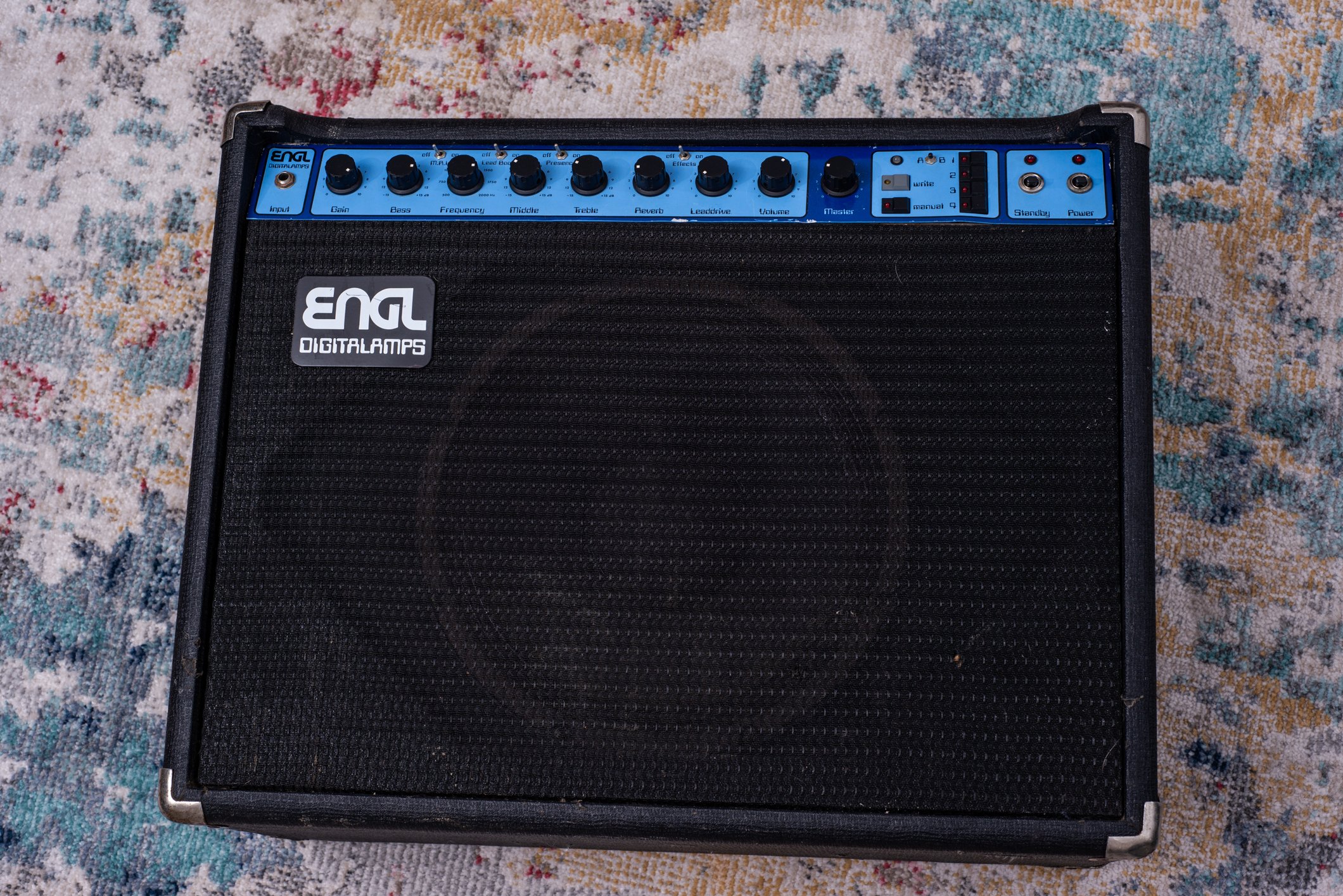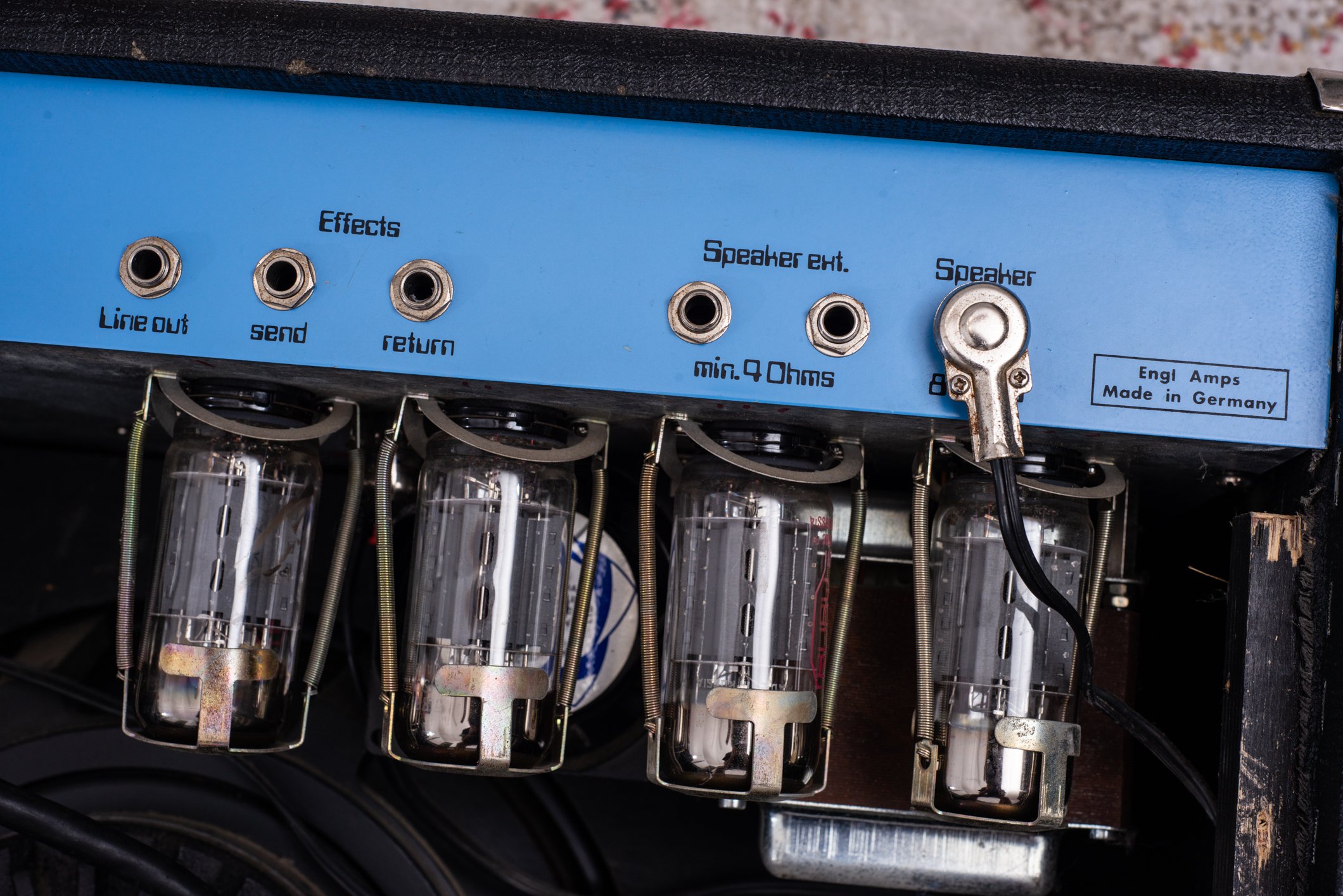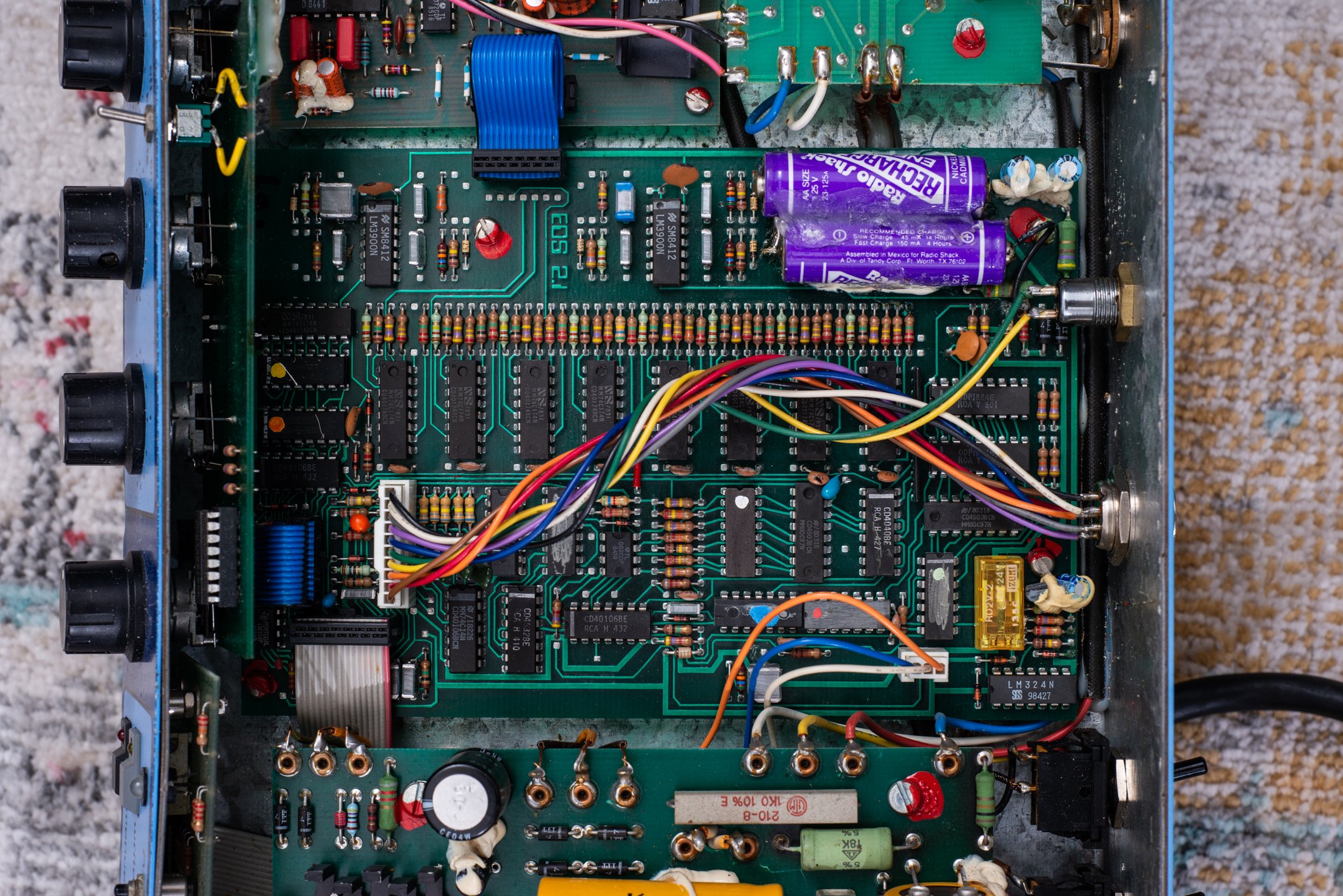1985 ENGL Digital Amp E101
Specs
100w Output
Later revision with “MRI” system
4x 6L6 Power Tubes
3x 12AX7 Preamp tubes
Serial effects loop
Accutronics spring reverb
EV 12” Speaker (Same as Force 150)
2 banks of memory with 4 channels each
Conventional digital storage system - no microprocessor - 5-bit A/D conversion
Introduced: 1984
£1010 in 1985 (about £3634 in 2023, or $4438 USD)
Overview
This is the first ever ENGL amp, the model E101 “Digital” amp, introduced in 1984. My particular example is a slightly later revision from 1985, which has the MRI” system which allows the recalling of settings by showing an LED light when you have a control set to the correct spot. More on this feature a bit later.
This amp is not digital in the modern sense - no computers or microchips. Instead, this is an all tube signal path, but offers a digital control system which can be used to store the settings of the amp into one of 4 settings accessible from the front panel or via footswitch, and in two banks (so a total of 8 settings can be saved). This can be any combination of the front panel settings in the light blue - gain, EQ, reverb, as well as the switches like presence, lead boost, and effects loop on/off. The only setting on the front panel that isn’t saved is the master volume control, on the darker blue background. For 1984, this is pretty mind boggling stuff, barely coming out after MIDI (1983). I do not have the footswitch, but it’s not MIDI, it’s a round 8-pin socket that I haven’t been able to find a replacement for. Settings can be locked so new ones can’t overwrite old ones via an actual, physical key on the back panel, which also has a 3-way ground switch, a fan to cool the power tubes, effects loop, line out, and speaker outputs.
The amp itself is actually a very sneaky two channel amp, and the second channel (overdrive) is blended into via the gain control. This allows the amp to offer a very nice, very clean sound, while also letting you get a nicely voiced overdrive sound too. When the amp is in manual mode, you can hear the transition pretty clearly by turning this knob and engaging the lead boost on and off, then store your favorite setting to one of the numbers for quick recall. In addition to the regular 3-band EQ controls, there is also a “Frequency” control, which adjusts the center mid frequency, and is denoted in hertz. This is a very useful control that really expands the range of tones in the amp. There is no presence control, but there is a presence switch - I can’t tell if this is a true power amp section presence control or just a bright switch, but either way it has a fixed effect of introducing quite a bit of high end to the tone, which helps cut through a dense mix. The lead boost I find a little less usable, while it offers a huge amount of gain for an amp this old - possibly the highest gain stock amp from 1984 - it’s not shaped in the way a newer high gain amp is. It’s interesting to see this evolution of gain voicings, since the 1989 ENGL Straight has a more articulate voice, and then by 1992 the Savage is pretty much what we’d consider to be a modern high gain sound even today. A lot of progress was made between 1984 and 1992.
The MRI feature that these “second gen” E101’s have is a switch on the front panel that assists you in dialing back in the settings of a saved one, but not in the sense that a modern digital amp might recall a setting. On this amp, say you adjusted the controls to a tone you loved, and saved it to slot A1. A month later, you make some new sounds, but you find that you wished your settings from A1 was just a little bit louder, but you can’t remember your exact settings. So, you select A1, then flip the MRI switch to “on.” Now when you turn each knob, the little LED light above the control will light up when you have the setting right - for example, if your saved setting has the gain set at 3 O’Clock, when MRI is on, turning the gain knob will light the LED above it when you reach 3 O’Clock, so you can dial the original settings back up. It’s a pretty rudimentary way of doing it from a modern perspective, but super cool for this era of amp.
A few other features to outline, the E101 model is the 1x12 combo amp and came factory with either a Celestion Sidewinder, which is a 150w speaker long forgotten, or you could pay extra for an upgraded model with an Electro-Voice Force 150 speaker, unlabeled, such as this particular example. This is a really cool sounding speaker, and since the amp has a full 100w power section, that extra power handling means it’s plenty safe to play even at full volume (well, safe except for your ears). There is also an E102 model, which is the same amp in a head version. Furthermore, there are also E201, E301, and E202 and E302, which are the same amps again except with different cosmetics.
It’s hard to think of a more interesting amp in my collection as far as an amazing artifact of history as this one. The unique design and features, digital control system, tube signal path, and soldered in Radioshack AA batteries to top if all off - it’s just immensely interesting to me. Digitally controlled amps in this manner never quite caught on, but the 1987 ADA MP-1 uses a similar concept, with a tube signal path but digitally controlled settings and storage, but with MIDI support. Also peripherally related, the first “digital” guitar amp I can find was actually made by Orange, the OMEC Digital Programmable Amplifier, designed in 1975 and of which only one was built, as far as I can tell (More OMEC info).
I’ve compiled a few resources for the E101 below:
ENGL E101 Review from One Two Testing musicians' magazine, July 1985 issue
Celestion Sidewinder Brochure (not equipped on this amp, but was stock on many of them)





















